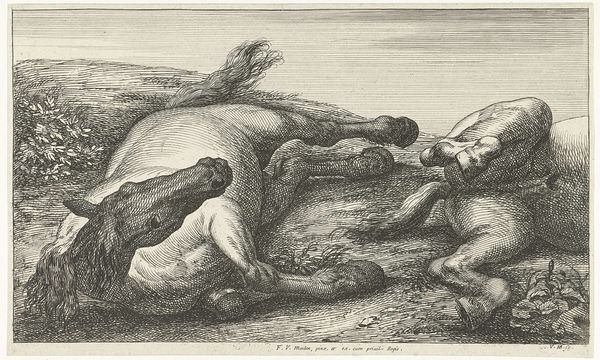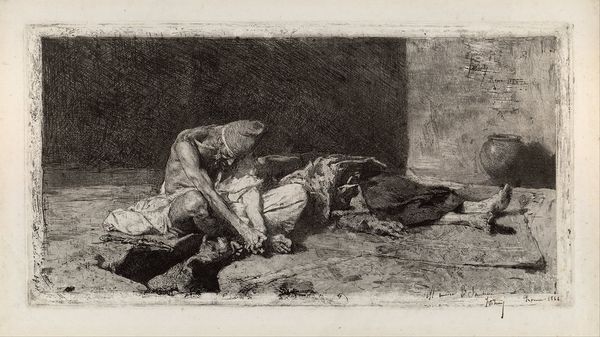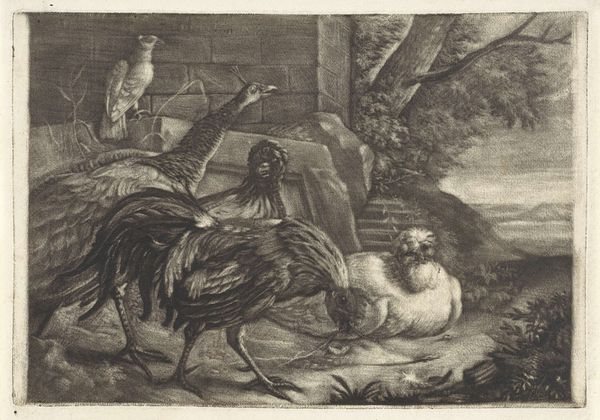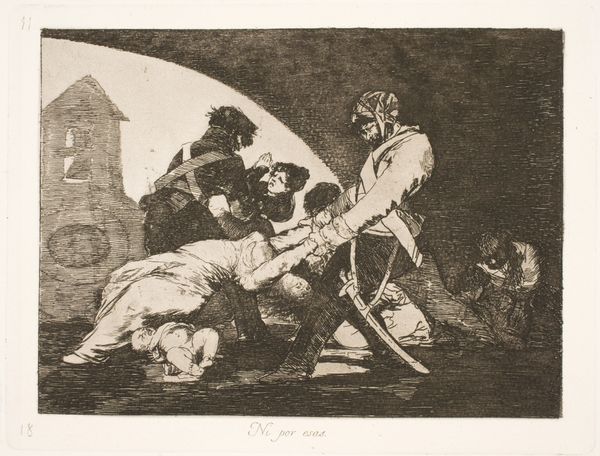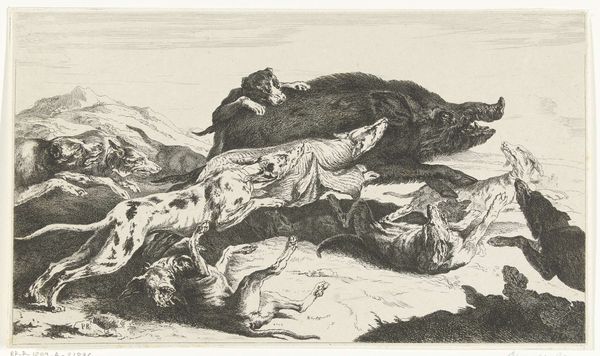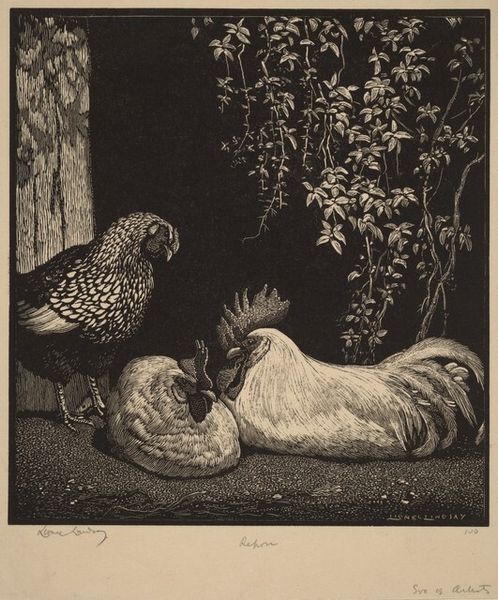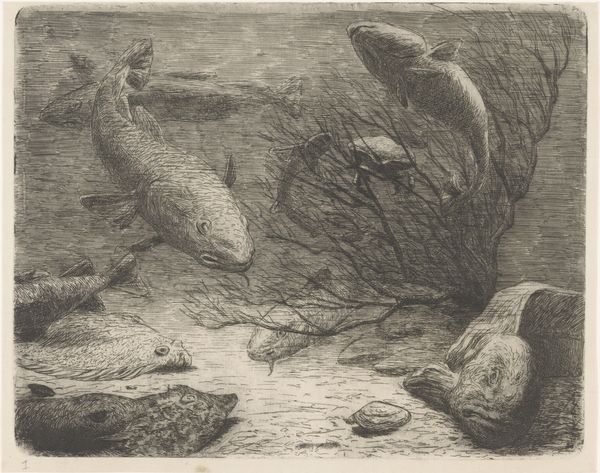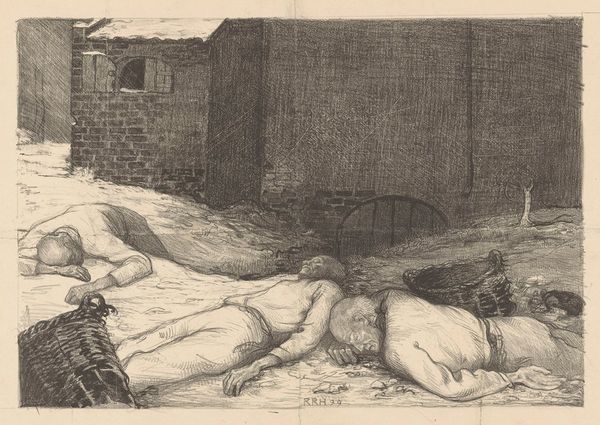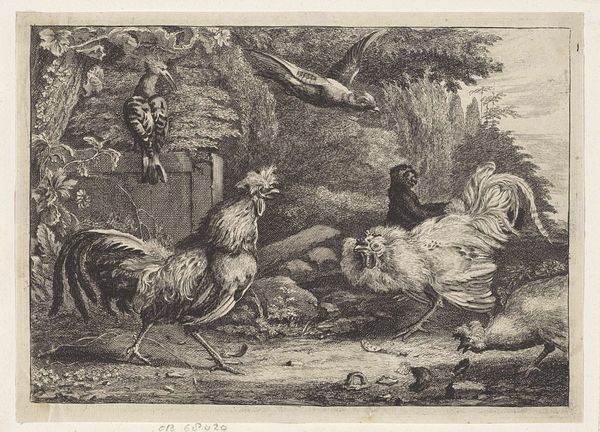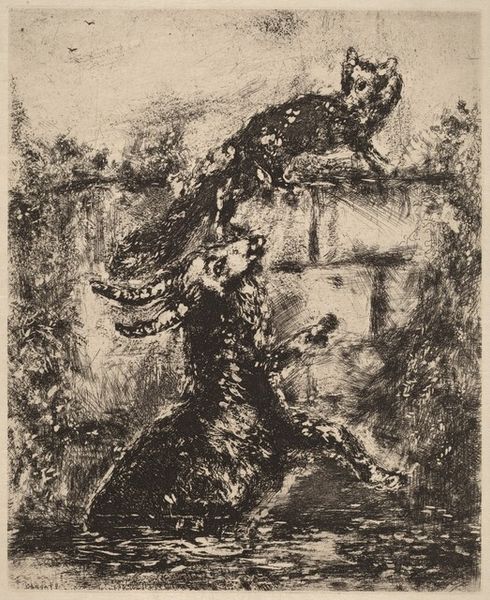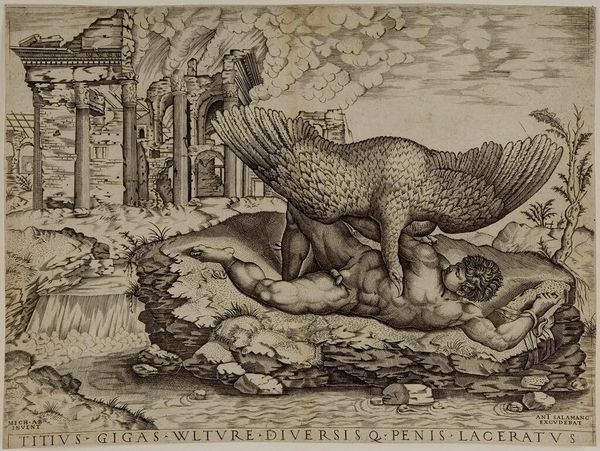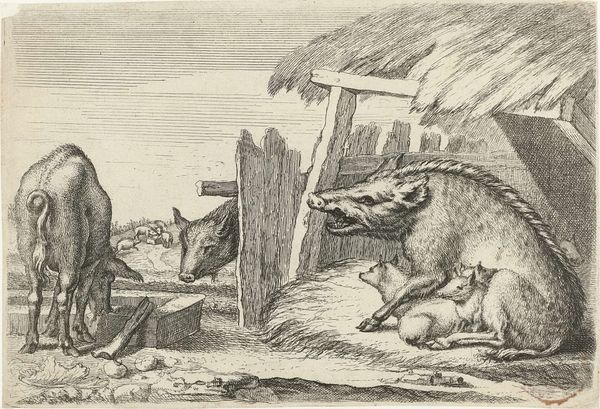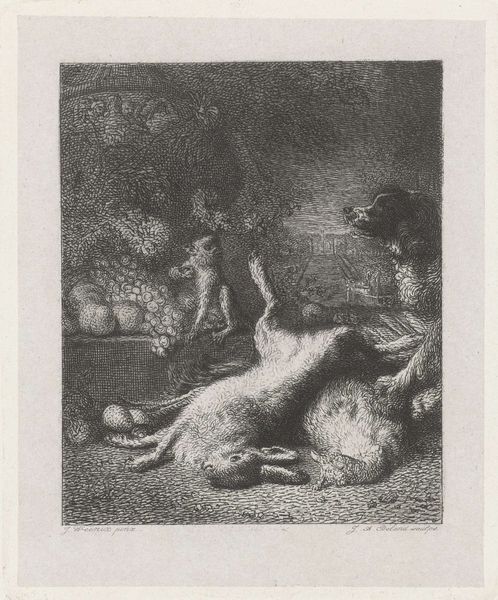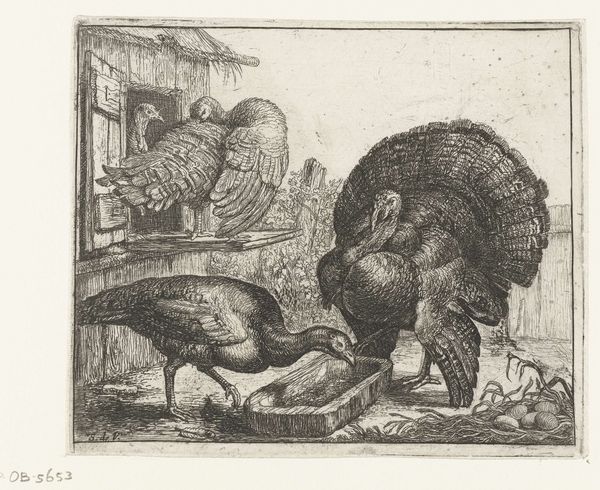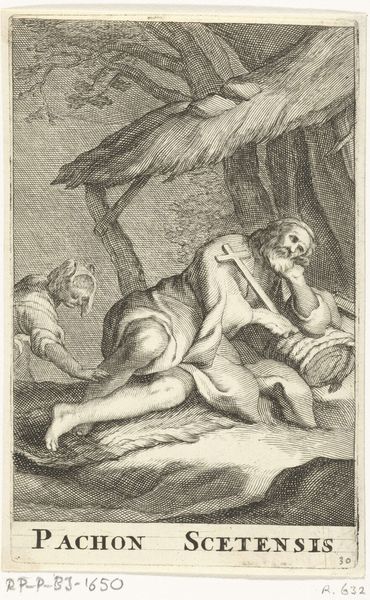
oil-paint
#
portrait
#
baroque
#
dutch-golden-age
#
oil-paint
#
oil painting
Copyright: Public Domain: Artvee
This is Still Life with Peacocks, painted by Rembrandt van Rijn during the Dutch Golden Age, a period marked by unprecedented economic prosperity and cultural flourishing in the Netherlands. Peacocks, often symbols of wealth and status, are presented here stripped of their vibrant plumage, hanging lifeless. We see a young girl peering from a window, perhaps a servant, suggesting a disruption of the traditional hierarchies of representation. She is a witness to a scene of opulent consumption, yet remains on the periphery. Rembrandt, in this still life, might be challenging the conventional narratives of Dutch prosperity, hinting at the costs and exclusions that underpin such displays of wealth. Consider how Rembrandt complicates the traditional symbolism of the peacock, transforming it from a symbol of pride into a stark reminder of mortality and social division. It's a poignant reflection on the complexities of identity, class, and the human condition.
Comments
rijksmuseum about 2 years ago
⋮
In Rembrandt’s time, peacocks were eaten by the well-to-do: the meat was incorporated into meat pies, among other dishes. Immediately after being killed, the birds were hung to bleed out, as Rembrandt shows us in this storeroom. He was doubtless captivated by the plumage’s splendid marks, the riot of colours: blue, green and yellow ochre.
Join the conversation
Join millions of artists and users on Artera today and experience the ultimate creative platform.
